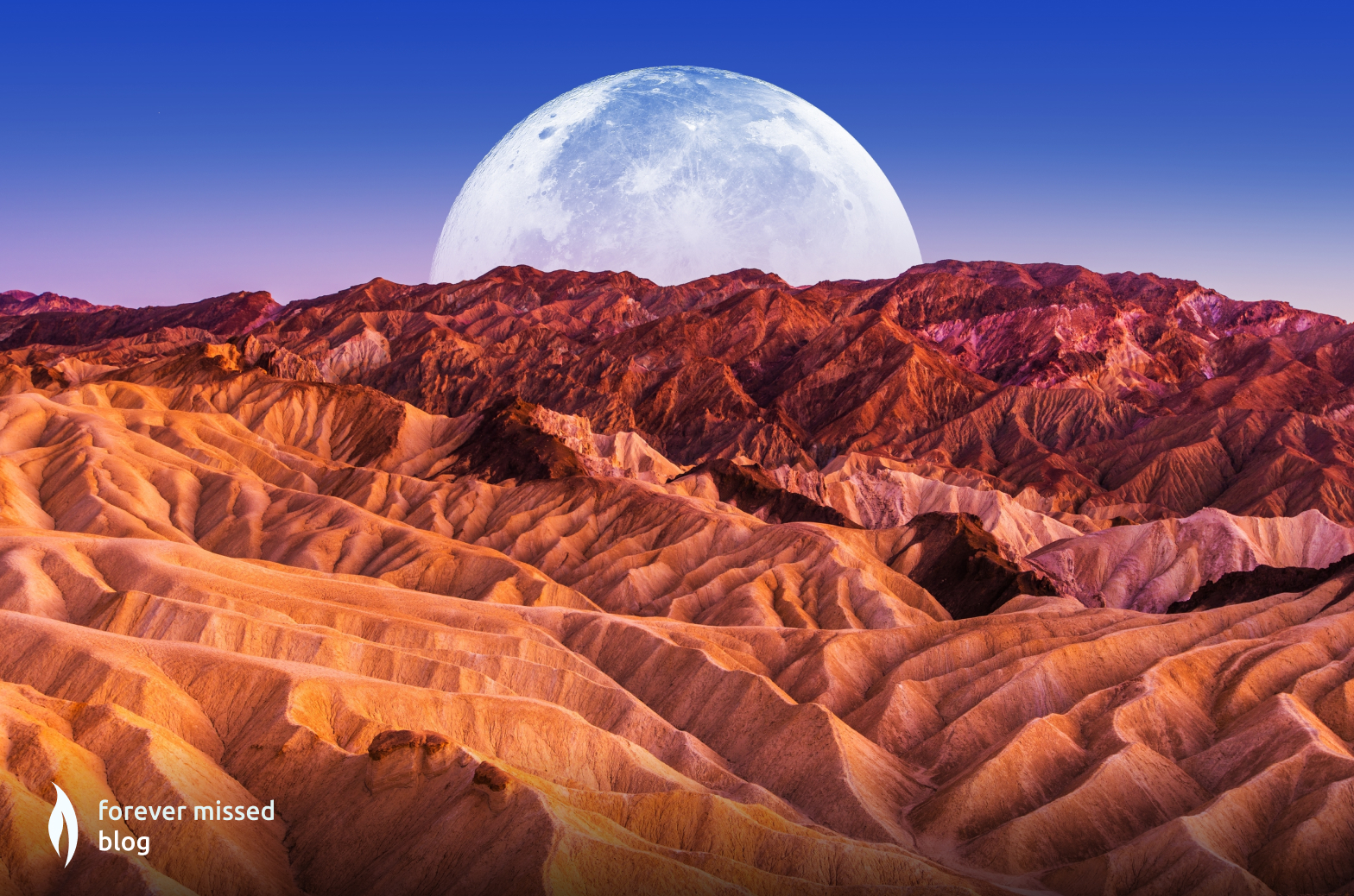Death Valley: What its Name Says About the Living

Death Valley has a foreboding name, but it is an example of how human beings commemorate our experiences with death.
Have you ever wondered about the origin of foreboding names of cities, towns, or large geographical areas? Are you curious as to why we use place names that invoke fear, death, and more? Below we will discuss the well-known example of Death Valley, consider why such names persist and how they are perceived, and provide a modern-day look at how we still stake claims to honor the dead today.
Death Valley is a long stretch of desert located in Eastern California, in the northern part of the Mojave Desert. It is one of the hottest places on Earth, and the terrain, climate, and lack of water have made it difficult for people to survive there throughout history. In fact, Death Valley’s name originated because of the impending doom early European settlers felt while trapped there. Today, it is a National Park that straddles the California/Nevada border. It is the largest national park in the United States. It is also the hottest, the dryest, and the lowest in altitude. It is a beautifully preserved subtropical desert, yet it is a harsh and unyielding landscape, too, giving credence to its name.
How Death Valley Got its Name
Death Valley’s forbidding name was bestowed on this harsh landscape in 1850. A group of early pioneers became lost in the valley in 1849-1850 as they tried to reach California to mine gold. They believed they would all die there before the winter was over. In the end, only one of the group actually perished in Death Valley. Even though the remaining pioneers climbed out of the valley over the Panamint Mountains, their name for this locale to honor their lost compatriot stuck and remains today.
Over the years, the area became even more synonymous with death as it inspired additional local names. Death Valley also contains the Funeral Mountains, where the highest point is called Skeleton Peak. It is also the site of Coffin Canyon. Nearby in the Specter Range in Nevada, you can find Skeleton Hills and Skull Mountain.
The Social and Cultural Reasoning for ‘Death’ Names
So, why are we as humans obsessed with these macabre names? In our Western cultural tradition, there has long been value put on the names of places. This is why, for instance, there are so many towns and cities named after the Founding Fathers. The way we name places says much about what holds the most space in our human psyches – even the negative things. We may not be obsessed with death and dying in a cynical sense, but this subject matter is ingrained in our human experience and an important part of who we are. This is why staking a claim on the land and giving it a name, even when associated with pain and loss, is a longstanding tradition in our culture and explains names like “Death Valley” today.
Other Examples of Depressing Names
While Death Valley is one of the most recognizable of these foreboding place names, it is far from the only one. Consider several other examples, aptly named from the historical human experience taking place in each:
Tombstone, Arizona
Prospector Edward Schieffelin coined this name in the 1870s. Soldiers who had been through the area told him not to bother looking for precious natural resources in the desolate place. In fact, they told him all he would find there would be his own tombstone, as had been the case for previous explorers who perished there. Eventually, Schieffelin explored the region anyway, finding deposits of silver that would make him rich. Though it was a difficult place to live and work in, and it claimed many lives, the name Tombstone was Schieffelin’s way of proving he had conquered the landscape even while others had not.
Misery Bay, Michigan
The exact origin of this location’s name and the Misery River that feeds it is unknown. However, many people believe it was named by the original European settlers who lived – and died – there. It was tough to deliver supplies to the area, and many settlers are said to have died of starvation or lack of medical supplies.
Skull Island, Washington
The origin of this disturbing name is clear from the historical record. Located inside Massacre Bay, this island is where the Haida tribe from Northern British Columbia attacked and killed the local Native Americans. It is said that every member of the tribe was killed, leaving behind skulls and bones that served as a warning to any other tribe hoping to stake a claim on the island.
Murder Island, Nova Scotia
Legend tells us that when French explorers discovered this island, it was covered with human bones. The explorers had stumbled upon the site of a tragic massacre, in which two Native American tribes battled over supposed buried treasure – and murderously expunged one another in the process.
Why We Still Stake Claims in the Names of the Lost
Although we are no longer in the age of discovery and exploration when most of the above names were given, humans still stake claims today – just in a different way. One example is the growing popularity of online memorial websites for those we love or commemorate wars, natural disasters, or other historical moments when many people perished.
Staking a claim on your own “digital plot” and naming it after a deceased loved one is a way to preserve your own experience with death, just like early European settlers did in the Americas. These very personal websites are places you can visit to remember, celebrate, and grieve – all-important experiences of the human condition.

